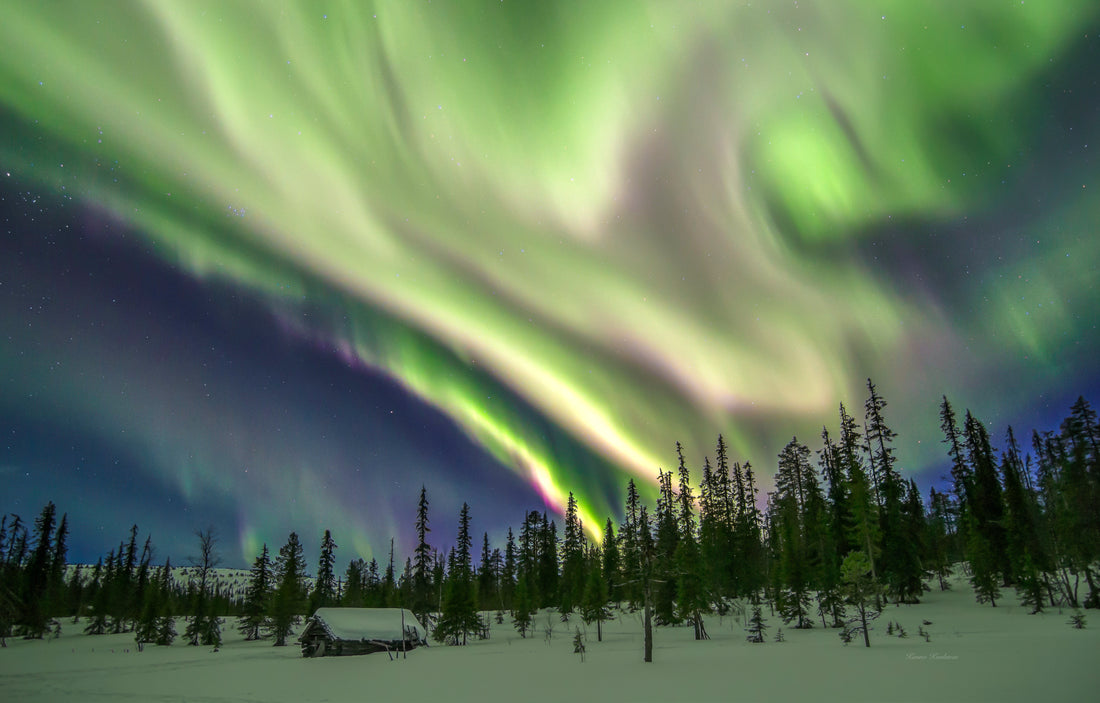
The northern lights don't tell
Share
The title seems to be the name of Mauri Sariola's novel from 1957. By the way, in Rikosjännär you move in the milieu and scenery of the old Pallashotelli.
Today, almost everyone who owns a smartphone can photograph the northern lights. The media is full of great time laps photos and videos. The northern lights can also be predicted by following the sun's eruptions, and many dedicated photographers can already move to their own shooting area free of light pollution.
Back in the 60s, Äkäslompolo was a village with no light pollution and the northern lights could be seen even without turning off the lights. One winter evening, I went on a post-picking trip, which was the evening job of the village brats at that time. It was about a crisp kilometer from us to the post office, and somewhere shortly before the bridge crossing the river, the snowy landscape began to come to life. At first I noticed how the snow began to vibrate in different shades, then I looked up at the sky. The middle sky was ablaze, not just green, but various shades of orange and red. The colors were reflected from the surrounding snow, it felt like I was walking in a wonderland, and the silence of the stamps added to the feeling of unreality and was scary. The corona phenomenon emerging in the middle sky looked like a cancerous blood that would soon plunge down and swallow the world and the postman walking on its surface. I didn't dare to look at that apocalypse-predicting branding, but I pushed my fur cap deeper and half ran to the post office. On the way back, the sky had clouded over and snowflakes began to fall.
At that time, there was a belief that the northern lights heralded freezing temperatures and snow flurries. I guess it was an assumption based on experience born over the centuries, although there seems to be no scientific evidence for it. In any case, after that childhood experience, the attitude towards that natural phenomenon has been quite neutral. And when the causes of the phenomenon have been explained as a disturbance in the upper atmosphere due to solar eruptions and the earth's magnetic fields, glowing from them as some mysterious magic fire seems out of date. Let's just let the Japanese people admire the sky fire and believe that they bring children happiness. Aurora Borealis is a tourist asset, nothing else.
Or, maybe not. While building this thing, I went for a drive on the Aakenus road in the evening and through the windshield I noticed a small light phenomenon in the northern sky. On the bridge crossing the Äkäsjoki, I stopped to admire the northern lights that had grown into a real phenomenon. In that light-free environment, I was once again mesmerized by the unpredictable movement of the northern lights across the sky and the shades of purple that bordered the green wave-like movement of the lights. There is magic in them.

